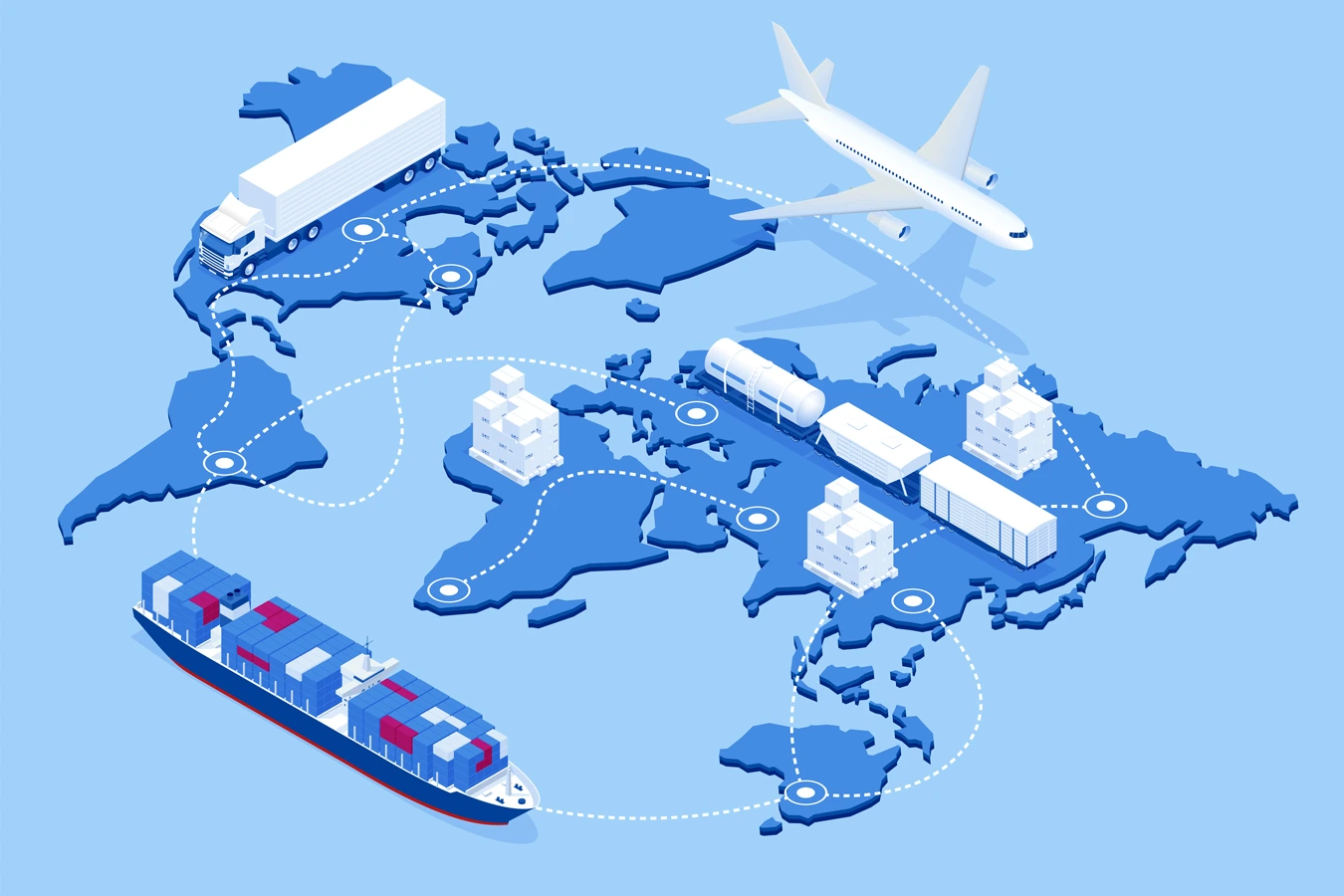Products
- Circular Connectors & Cable Assemblies
- D-Sub Connectors
- IP67 D-Sub Connectors
- D-Sub Backshells
- Micro-D Connectors & Cable Assemblies
- Power-D & Combo Mixed Connectors
- Push Pull Connectors
- D-Sub & Micro D Hardware
- Modular RJ45 Connectors
- USB Connectors
- D-Sub Adapters & Gender Changers
- SCSI .085"/.050"
- .050 Ribbon
- Headers & Receptacles
- Bayonet Connectors
Supply Chain
ORIENTING TO THE NEW SUPPLY CHAIN TOPOGRAPHY
When will supply chain irregularities finally subside?
There is a good possibility that the uncertainty in supplies and prices are here to stay.
If one imagines the supply chains pre-pandemic as a smooth surface, then troubles of 2020-2021 created a mountainous topography. Labor, shipping, and production accumulated unused in some locations, while elsewhere companies found themselves in a deep trough of shortages and delays.
The uneven playing field then inflated prices for raw materials and critical, in-demand components. Large tech companies could scoop up new component production in lower-price bulk contracts, leaving smaller makers empty-handed or subject to extreme peaks in price.
After production and shipping resumed, the expectation was that backlogs would dissipate. Market forces would iron out the wrinkles in the global manufacturing and logistics network.
An uncertain landscape
Another view, put forth by noted economist and writer Noah Smith, says otherwise.
The smooth surface made by 30 years of globalization is a temporary condition. In many ways, too, artificial -- made through considerable diplomatic and political effort. The natural state of trade is far more variable and volatile terrain.
Smith suggests that the geopolitical tectonics underneath supply chains have fundamentally changed. There is no longer a single authority that has the incentive to impose discipline on the system.
Going forward, trade topography will be subject to the same type of crags and crevices as different regions compete to establish a new economic order. Interruptions caused by disease, natural disaster, embargo, labor unrest, or local conflicts will continue to reverberate through global networks.

DESIGN FOR SUPPLY CHAIN
Fortunately, uncertainty is something electrical engineering teams can learn to live with.
In pre-2020 procedures, designers assumed that parts could be easily obtained, so they simply went ahead and optimized for performance. In the new environment, they need to factor procurement in the equation. Design for Supply Chain (DfSC) is now coming into focus for many new initiatives.
Just as Design for Manufacturing (DfM) or Design for Assembly (DfA) considers the cost and timelines of downstream practicalities, DfSC strategies try to anticipate purchasing issues earlier in the design process and maintain flexible contingency plans for replacing components.
One strategy might include securing a sizable inventory of desired parts before production starts.
Or, in the case of connectors, designers have a whole spectrum of product alternatives. The NorComp catalog
features several varieties of connectors that could be substitutes without change in operability or compatibility.
A replacement connector could have a slightly different shape but with similar electrical performance -- a combined signal/power connector could be swapped for two separate connectors, for example. A vertical mount could be used instead of a right-angle. A substitute could also exceed the specifications with a higher IP rating or power rating, a higher pin count, a more rugged design, or a different material.
These part selections may not be engineers’ initial picks, but they could become the optimal choice during supply chain slowdowns and inflationary spikes.
THE ADVANTAGE OF GEOGRAPHIC DIVERSITY
Selection of suppliers and distributors matter, too.
A large and established supplier will have alternative components on hand and can assist customers in their supply chain strategy and help keep production timelines on track.
The master strategy now among many tech giants, like Intel, is to intentionally build out geographically diverse supply chains. If upheaval hits one part of the world, large projects can readily switch their sourcing to another region.
NorComp is already a well-diversified supplier, with partnered custom- and standard-part manufacturing facilities in the US, Canada, Europe, and Asia. NorComp's Rugged Environment Certified (REC) product lines are the #1 choice in robotics, military, industrial equipment, and other demanding applications.
Contact a NorComp representative today to help bring your supply strategy into focus.
Go Back





